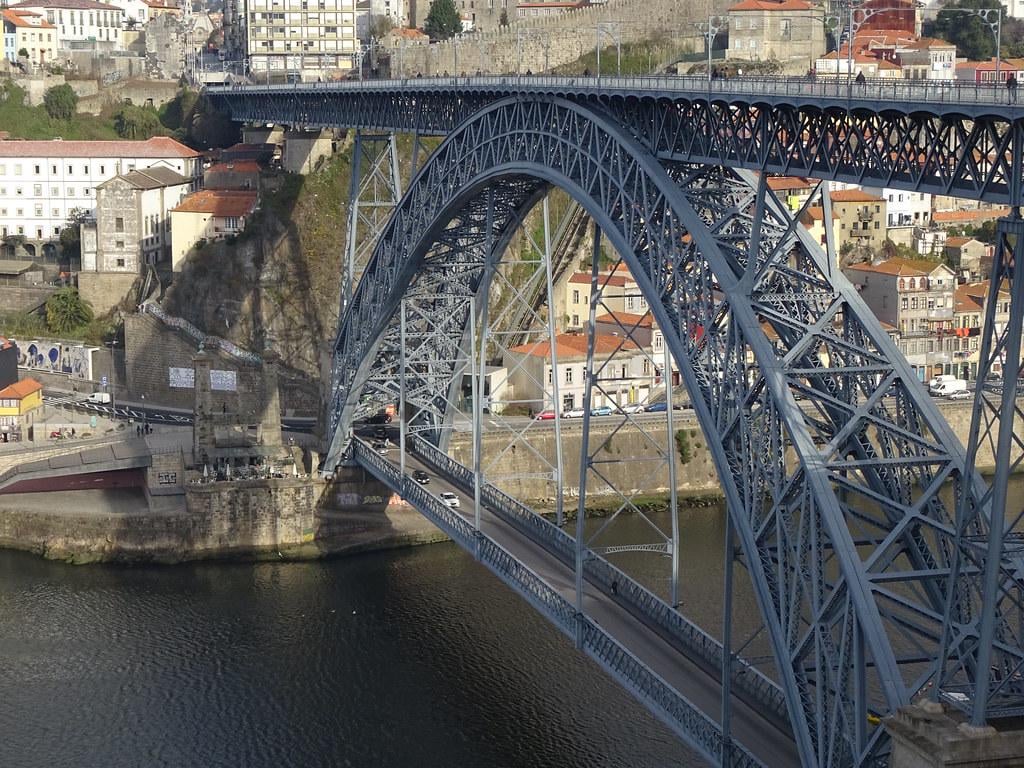[ad_1]

The Puente Doña María Pía is a railway bridge located in Vila Nova de Gaia, Portugal. It was designed by the famous French engineer Gustave Eiffel and completed in 1877. The bridge was named after Maria Pia of Savoy, the queen of Portugal at that time.
This bridge is known for its unique design, with a single arch made of wrought iron. The arch spans over the Douro River, connecting Vila Nova de Gaia with Porto. The Puente Doña María Pía was considered a marvel of engineering in its time and is still admired for its grace and beauty.
The construction of the Puente Doña María Pía was a significant achievement in the field of engineering. It was one of the first major works by Gustave Eiffel, who later went on to design the Eiffel Tower in Paris. The bridge was a crucial transportation link, allowing trains to cross the river and connect the cities of Vila Nova de Gaia and Porto.
Today, the Puente Doña María Pía is no longer in use for railway traffic, but it still stands as a testament to Eiffel’s innovative design and engineering prowess. The bridge is a popular tourist attraction, offering stunning views of the Douro River and the surrounding landscape. Its historical significance and architectural beauty make it a must-see landmark for visitors to Vila Nova de Gaia.
